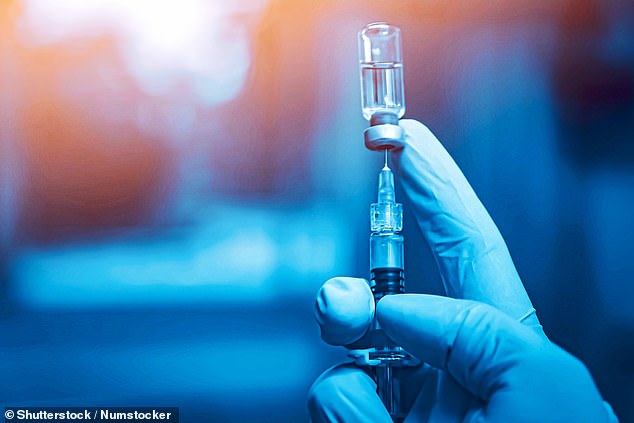Scientists develop new vaccine that makes moles ‘self-destruct’ as a way to remove them
They were once considered a sign of beauty made famous by the likes of Marilyn Monroe and Cindy Crawford.
But now scientists believe they have found a way to get rid of moles – which doesn’t involve patients having to go under the knife.
The Frances Crick Institute has developed a kind of personalized vaccine that can cause moles to ‘destroy’ themselves.
They believe this could lead to a treatment to reverse moles in patients at risk for cancer and even pave the way for a new form of cosmetic removal.
Small skin spots are very common and appear when pigment-producing cells called melanocytes grow in groups.
Scientists think they can make moles ‘self-destructive’ using a vaccine. It is hoped this could lead to a treatment to reverse moles in patients at risk of cancer and even pave the way for a new form of cosmetic removal.
There is also a rare skin condition caused by genetic mutations in the womb called congenital melanocytic nevus syndrome (CMN), which can cause up to 80 percent of a person’s body to be covered in large, painful or itchy moles.
Children and adults with this condition are at increased risk of developing the most serious form of skin cancer, melanoma.
Scientists designed the vaccine in collaboration with Great Ormond Street Hospital (GOSH), which treats young people with the condition.
By testing it on cells donated by patients as well as on mice, they were able to knock out a gene mutated in these mole cells that can predispose people to cancer, called NRAS.

Scientists designed the vaccine in collaboration with Great Ormond Street Hospital (GOSH), which treats young people with the condition
The team used a genetic therapy called silencing RNA, which was delivered in special particles directly into the mole cells.
They gave injections of the therapy to mice with CMN, which knocked out the NRAS gene after just 48 hours, causing the cells to self-destruct.
They also tested it in cells and whole skin sections from children with CMN with the same ‘very exciting’ results, published in the Journal of Investigate Dermatology.
Veronica Kinsler, professor at Crick and GOSH, said: ‘CMN is physically and mentally challenging for children and adults living with the condition and for their families.
‘These results are very exciting, because the genetic therapy not only causes the self-destruction of the mole cells in the laboratory, but we have also managed to introduce them into the skin in mice. These results suggest that the treatment may be able to reverse moles in humans in the future, but more testing will be needed before we can give it to patients.
‘We are very grateful to our patients at Great Ormond Street Hospital, who have actively participated over many years in helping us produce this new potential therapy.’
Scientists said they hope the therapy, funded by the National Institute for Health and Care Research (NIHR), will soon start clinical trials in humans.
Jodi Whitehouse from Caring Matters Now, which also helped fund the research, said: ‘This breakthrough in finding a treatment for CMN could change the lives of the families we support who are living with CMN.
“As someone who was born with CMN covering 70 percent of my body and who underwent more than thirty surgeries in my youth to remove the CMN due to the fear of melanoma, but without success, this news is awe-inspiring and exciting. It brings real hope to the lives of people living with CMN.”
Catriona Crombie, head of rare diseases at LifeArc, said: ‘This work is part of our commitment to improving the lives of people with rare diseases, by investing in promising research and helping scientists break down barriers to translational research. vanquish.’
